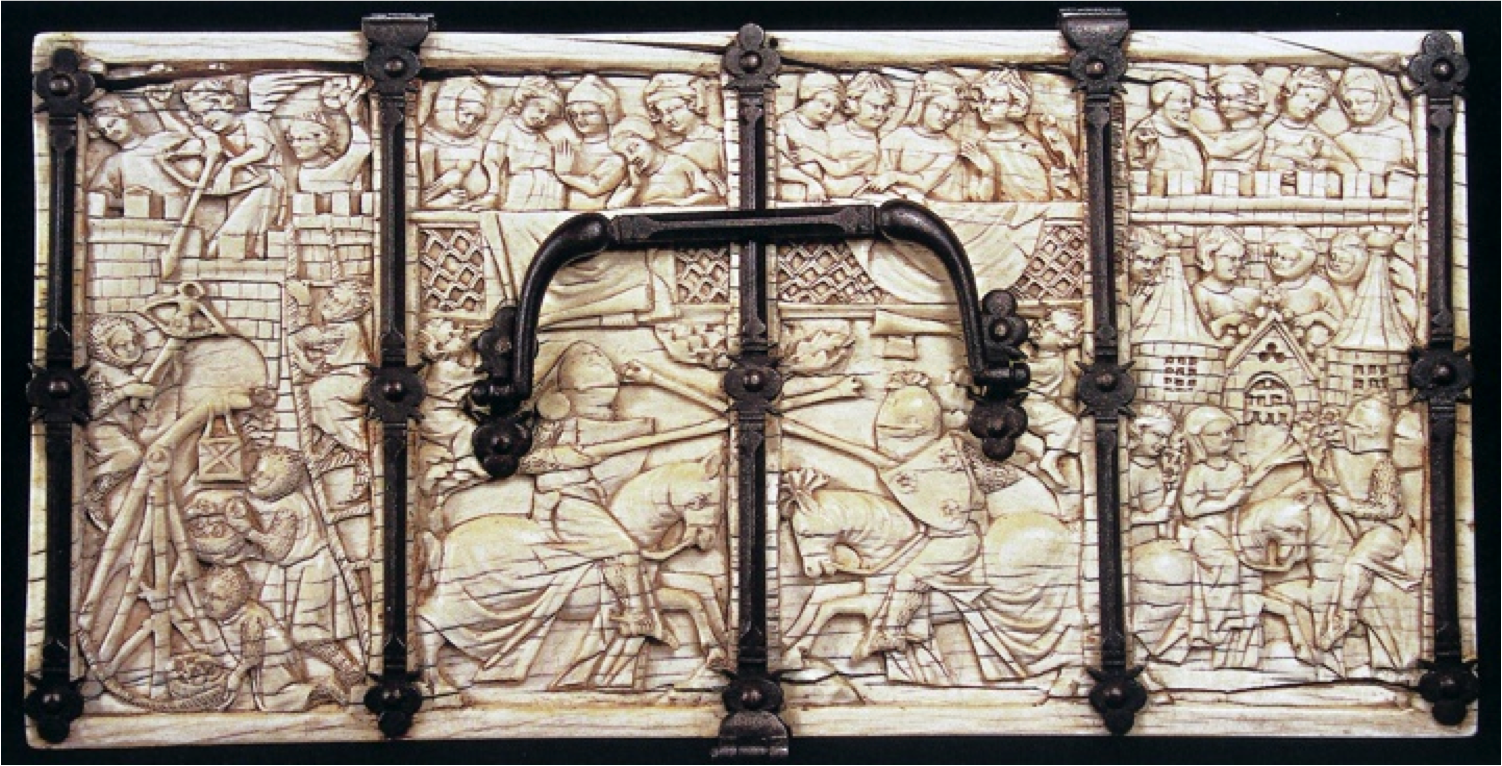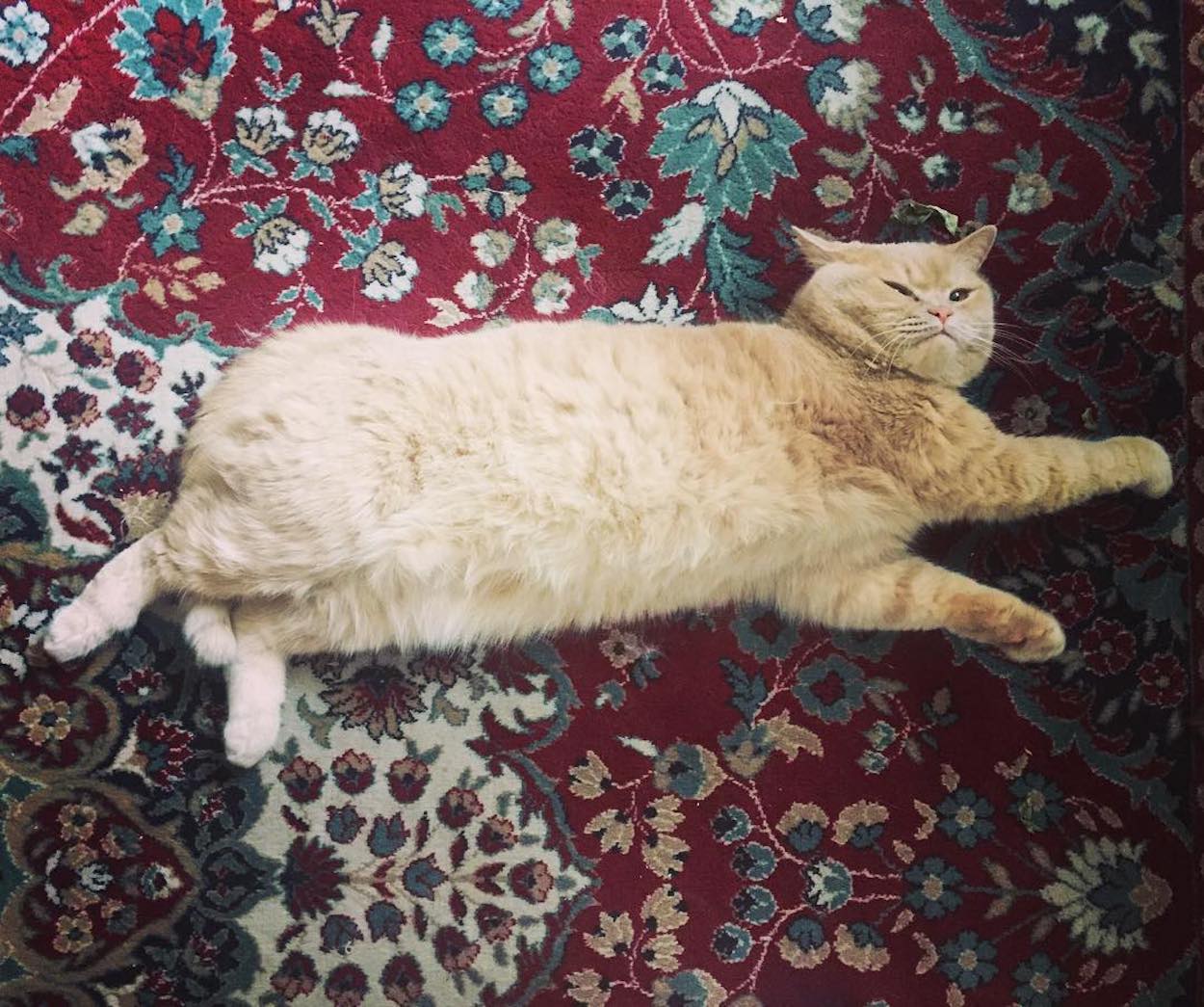Medieval Romance Literature, or the literature of courtly love, arguably reached its height in the 14th century in much of Western Europe, and this remarkable ivory casket is a testament to the proliferation of its various tales and the continued resonance of many of its themes. Rising first in France in the 12th century, medieval romance spread far and wide, driven by troubadour poets, oral storytellers, and the popularity and endurance of many stories still familiar to us today. Decorated on its four facing sides and its lid, this box features scenes from Arthurian romance; Sir Lancelot, for example, can be seen on the back of the box in a panel showing him at the Bridge of the Sword, and to the immediate left is a panel in which a fully-armored knight, likely Yvain, battles with a lion.
The most interesting, and somewhat mysterious, scene is displayed on the lid of this box (the lid is pictured here this week) and has been referred to by scholars as “the assault on the castle of love” or “the siege of the castle of love.” There are a variety of familiar hallmarks incorporated into this image: a group of knights appear to be attacking a castle that is defended by women and a cupid, and the primary weapons used by both sides are flowers, mostly roses. Unlike other scenes associated with medieval romance, the literary origin of this battle is largely unknown, although it was clearly familiar enough by the 14th century to appear in various art forms.
Although much medieval art was inspired by religious themes or made at the behest of faithful patrons, this casket is an example of the secular, the lay, and the fantastic.
- Stephanie Skenyon
Dear users: we have a dream to translate DailyArt to new languages: Chinese, Portuguese, Spanish, French, Turkish and Italian. To make that happen we need to update the app and build some new software infrastructure. We need $10,000 - if you would like to help us you can donate here :) Thank you <3


 Unknown Artist
Unknown Artist